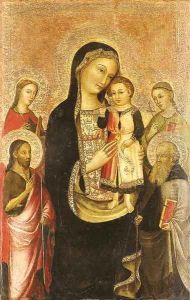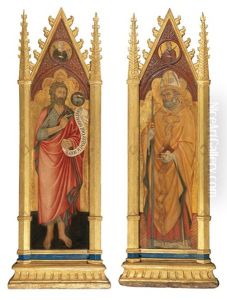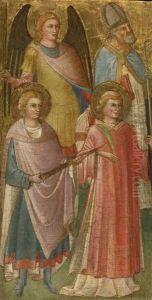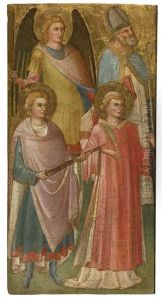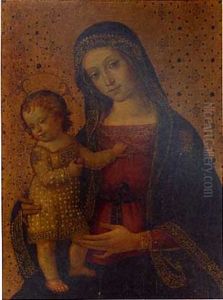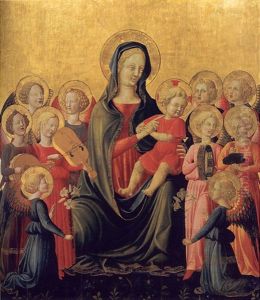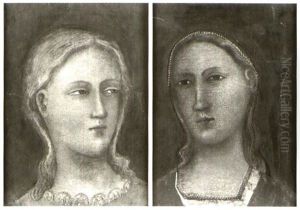Francesco D'Antonio Da Viterbo Paintings
Francesco d'Antonio da Viterbo, often simply referred to as Francesco da Viterbo, was an Italian painter active during the early Quattrocento (15th century) in Italy. While not as widely known as some of his contemporaries like Fra Angelico or Masaccio, Francesco contributed to the artistic developments of his time. His exact birth date is not well-documented, but he is believed to have been born around the year 1400 in Viterbo, a town in the region of Lazio, Italy.
Francesco's work was largely influenced by the prevailing artistic styles of the time, particularly the innovations of the early Renaissance period. This era saw a shift from the more stylized forms of medieval art to a greater emphasis on naturalism, perspective, and human emotion. Francesco d'Antonio was part of this transformative period in art history, though much of his life and work remain shrouded in obscurity due to scarce historical records.
It is known that he worked extensively in Viterbo, where he executed commissions for local churches and patrons. His oeuvre suggests that he was adept at fresco painting and tempera on panel. One of his most significant contributions is a polyptych in the church of Santa Maria della Verità in Viterbo, which displays his capability to convey religious narratives with clarity and emotional depth.
Unfortunately, Francesco d'Antonio's career was relatively short-lived. He died around the year 1433, at the age of approximately 33. The cause of his early death is unknown. Despite his premature passing, he left behind a body of work that allows art historians to glimpse the transitional phase between late Gothic and early Renaissance styles in the Viterbo region. His paintings are characterized by a certain grace and a delicate use of color, though they often lack the sophisticated use of perspective that his more famous contemporaries were developing.
Francesco d'Antonio da Viterbo's legacy is modest in comparison with the major figures of the Renaissance, yet he remains an important example of regional artistic production in Italy during the early 15th century. His works contribute to the understanding of the diffusion of Renaissance artistic principles beyond the major centers like Florence and Rome. Today, art historians study his paintings to better understand the nuances of regional variations in Italian Renaissance art.
